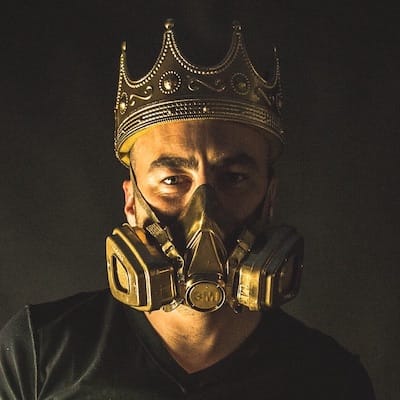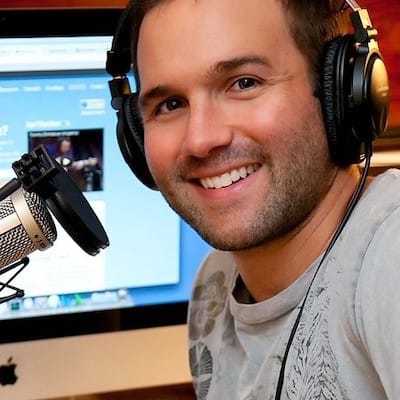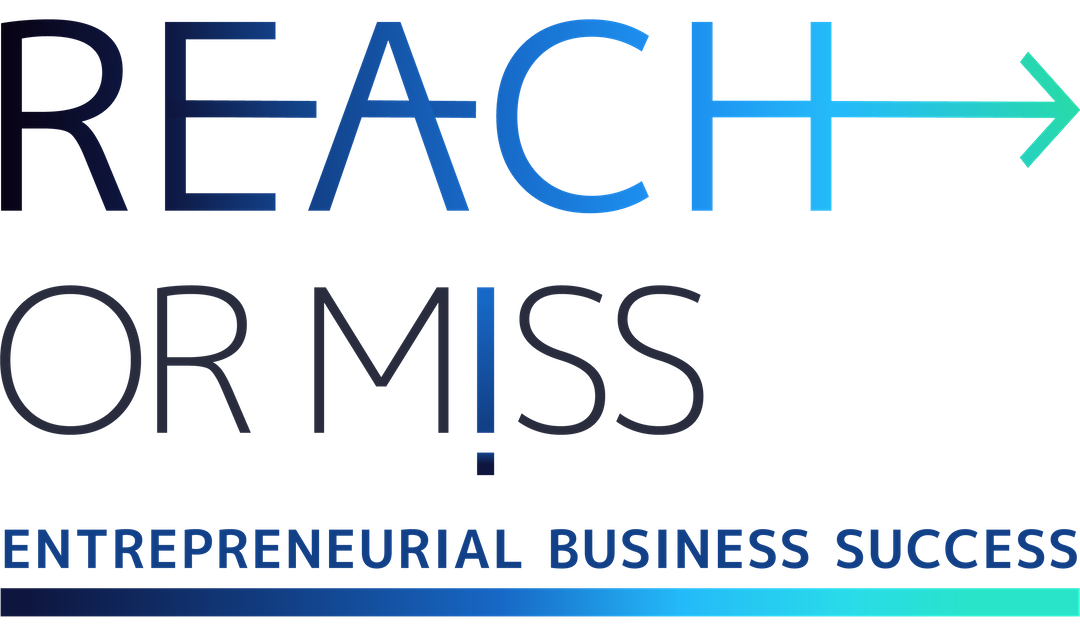Ep. 200 – The secrets behind entrepreneurial marketing success

My podcast, REACH OR MISS for entrepreneurs, reached its 200th episode, and – as part of the celebration – I decided to change its title to REACH OR MISS – Entrepreneurial Marketing Success.
The 1st secret – your “big idea” or what you are “one of a kind of?”
As I see it, the power and beauty of entrepreneurship is that it allows you to share or create what you are “one of a kind of” (the best at). That’s what entrepreneurs should focus on.
I’m aware that many people choose to enter the entrepreneurial world to leave their 9 to 5 jobs or to make more money, and these are good reasons; not every entrepreneur wants to change the world or make an impact. However, once you decided to become an entrepreneur, your chances to make an impact on more people and move the needle is significantly higher if you focus on your unique, powerful abilities.
I believe entrepreneurship is changing the world, not only because it can create technological or behavioral revolutions, but also because it enables entrepreneurs to choose to do what they are the best at and that means less mediocrity and much more greatness in our world.
What any entrepreneur should look for while deciding about his/her professional direction isn’t only where they can make a living, make more money or determine the leading trends today (although these are good and important parameters as part of this decision). Entrepreneurs should start to look for their professional direction after answering the question, What am I “one of a kind of”? Meaning, what will I be outstanding in doing?
The answer to this question lies in the meeting point between what you are best at doing and what you most like to do.
That will also be the direction where you have the best chances to achieve significant success
Once you’ve found what you are “one of a kind of,” you should find what product or service you should create or offer – one that answers a true need and brings value to a significant number of people or businesses.
Blake Jamieson is a fantastic example of an entrepreneur that is one of a kind at what he does, and he literally created a new market category that fit his talent.
 Blake Jamieson is a pop portrait artist in Manhattan, NY. He paints pop art portraits for professional athletes and celebrities, including Howie Mandel, Drew Brees, Joe Montana, Gary Vaynerchuk, and over 250 other professional athletes in the NFL, NBA, NHL, MLS, and PLL.
Blake Jamieson is a pop portrait artist in Manhattan, NY. He paints pop art portraits for professional athletes and celebrities, including Howie Mandel, Drew Brees, Joe Montana, Gary Vaynerchuk, and over 250 other professional athletes in the NFL, NBA, NHL, MLS, and PLL.
Blake’s path to becoming a full-time artist was far from traditional. Despite his passion for art at a young age, Blake decided to forgo art school for a more “practical” degree, studying Economics at UC Davis. After graduating, Blake began his career in digital marketing at Zynga. He worked in digital marketing for nearly a decade, working for small tech startups to publicly traded companies.
On his 30th birthday, Blake decided it was time to stop building someone else’s dream, and start to following his own passions. He began painting full-time nearly five years ago, and has carved out a niche that allows him to paint every day.
Most passionate about
- I’m a portrait artist located in NYC. I’ve had an interesting rollercoaster of a journey up until this point, but what I do now is paint portraits of professional athletes.
- Primarily, I have worked in the NFL, although I do work with other athletes who play soccer, lacrosse, hockey, and more.
- I created this niche for myself where an athlete, or the spouse or girlfriend of an athlete, is looking for a painting that will capture special sports moments for them. I’m often the person they turn to and I’m very fortunate to work with awesome people and get to paint every single day.

Blake’s story
- I grew up in a very creative household. I was always encouraged to paint, or draw, or do photography – all the things I do today. However, I convinced myself, from a young age, that art was about being a starving artist and that it was not a career path.
- Instead of doing what my parents encouraged me to do, which was to study art in college, I decided to study economics and tech. I thought this was the safe path at the time, and I aimed to have a career in marketing.
- When I graduated from college, social marketing was just starting to become an actual, respected career. I was able to get into very grounded levels for some reputable companies and work my way through several different companies. Then I spun off and started working for myself as a freelancer.
- Ultimately, on my 30th birthday, I decided that I was tired of working for someone else’s dream. I wanted to follow my own dreams and I realized that maybe my parents had been right all along…
- I’m very grateful. Due to my background in marketing – especially digital marketing – and my experience in marketing a wide range of products, I understand how social selling works and how it is really a relationship-building business. I built up a moderate following of friends, family, colleagues, and people I met along the way.
- When I first decided to start painting, I knew that I had to specialize and come out with a specific niche. I decided that I would paint a specific painting for a specific subset of people.
- Because of my networking at the time, I decided to paint for offices, especially for tech companies. I met with the people on my contact list and told them that I was an artist and that I painted office art for tech companies.
- At first, I painted many paintings of Steve Jobs, Gary Vaynerchuk, and different iconic tech founders. Those tech companies aspired to be like them and wanted to put a picture of Steve Jobs, or motivational quotes, in their offices.
- I did that for two years and it was going well. I had my niece called out and I was gaining a reputation as one of the leaders in the space of Portrait Painting for Professional Athletes.
- There was a really lucky coincidence that when I delivered art in Las Vegas, I met a guy who played in the NFL and who was now a manager of existing players. He really loved my art and asked me to paint a few of his clients as a gift that they would post about and promote to their followers. It might create new opportunities.
- I did some paintings of a few of his NFL players. In the process, I learned that NFL players are very competitive. If one guy has a painting, the other player wants a bigger painting. They also have the income to pay for that, as well as a lot of followers.
- I pivoted my business three years ago. Today, I paint more professional athletes than any other painter in my space.
Blake’s best advice about approaching customers
- I’ll go back to the story about when I thought I was taking the safe path by working in marketing instead of doing something I really cared about. I know that it’s kind of cliché to say “follow your passions,” but I will say that if you do something you really enjoy, it doesn’t feel like work.
- As an entrepreneur trying to solve problems, try to scratch your own itch. Try to solve a problem that was your own problem. Don’t try to solve a problem that someone told you offers a lot of money. It should be something that you want to use and that you want to do every single day.
- Another piece of advice: I worked for free so many times because I wanted the exposure and I wanted to do what I love to do. So, don’t be afraid to work for free. To this day, I do a third of my work for free as a way to promote myself and my paintings.
Biggest success due to the right customer approach
- I’ll share two. They’re both very meaningful turning points in my career. I told you about how supportive and amazing my parents were throughout my journey and my art career. When I started with art as my career, my first studio was in their house (today I have my own studio in NYC) and they were really happy for me. I was painting icons they didn’t recognize for tech companies they had never heard of.
- I was painting a comedian named Howie Mandel from “America’s Got Talent,” who has a pretty deep resume. A lot of people know who Harry Mandel is, including my parents. When I told my parents that I was going to paint him, they were excited and texted all their friends: “You know, Blake is going to paint Harry Mandel…” I painted him at his studio in LA and I shared this story about how excited my parents were when they heard I was going to paint him. He recorded a video especially for them, with me, saying how proud he was of me for following my passions and my heart. Being able to send it to my parents was so meaningful for me!
- The second one was: I left the studio in California, which was in their house, and moved to a studio in NYC. I was so afraid that I wouldn’t be able to afford it and that I would become the starving artist I was so afraid of. But it worked and I felt that I was no longer the guy who worked from his parents’ house. I actually live in one of the most expensive cities in the country and have not only an apartment but also my own studio. That was huge!
The challenge of entrepreneurial marketing
According to entrepreneurs whose business failed, the number 1 reason for their failure (42%) is not finding the market need.
There are two reasons for not finding the market need: either you didn’t focus on the right customers or your product definition wasn’t correct.
Once you decide on your “big idea,” you need to attract the customers that will buy your product or service and drive sales – that’s marketing.
In order to do so, there are two stages: first, you need to locate the right customers, and second, you should define your product or service in such a way that those potential customers will understand how it solves their problem.
The 2nd secret – locating the right customers
While seeking potential customers – the first stage – you should search the market to find where is the biggest market opportunity for your product or service and who are the customers that need it most.
Among them, you should find those that are currently most concerned about the problem your product or service solves; who are those that are actively looking for a solution to this problem and who are ready for it.
The 3rd secret – Defining your product or service
Once you find your customers, you should define your product so that they will understand it solves their problem.
After that, you should start using sets of activities aimed at creating awareness and attracting the customers to you.
John Lee Dumas – JLD – Focused from the first day of his entrepreneurship on the right target audience – his avatar (ideal client)!
 John Lee Dumas is the host of EOFire, an award-winning podcast where he interviews today’s most successful entrepreneurs 7-days a week. JLD has grown EOFire into a multi-million dollar a year business with over 1500 interviews and 1.5 million monthly listens. He’s the author of The Freedom Journal and The Mastery Journal, two of the most funded publishing campaigns of all time on Kickstarter. All the magic happens at EOFire.com!
John Lee Dumas is the host of EOFire, an award-winning podcast where he interviews today’s most successful entrepreneurs 7-days a week. JLD has grown EOFire into a multi-million dollar a year business with over 1500 interviews and 1.5 million monthly listens. He’s the author of The Freedom Journal and The Mastery Journal, two of the most funded publishing campaigns of all time on Kickstarter. All the magic happens at EOFire.com!
Your best advice about approaching the customer
For the right customer’s approach
- Number one, you need to know who your perfect customer is, the ideal customer, your avatar.
- Once you know who that person is you can start creating free valuable and consisting content for that person.
- Then you want to make sure you are getting that content in front of them so you have to find them and make sure you are putting that content in front of them. And of course, they will be attracted to that content because you are creating it for them specifically.
- Then, once you have the opportunity to get in front of them, asking them a question, sending them an email, newsletter or a social media message, you have to ask the question: What are you struggling with?
- Then you can start to understand your ideal customers, what their pain point, obstacles, challenges and struggles are, so then you – the person that by the way is been delivering them free value and assisting content, can provide the solution in the form of a product, a service or a community.
- You are not just somebody pitching them something, you are somebody that already provided them value, who they are growing to know, like and trust, who asked them what they are struggling with, who listened to them as they were telling their pain point.
- And who now say: ‘Hi, you told me you are struggling with this, here is the solution, and I’d love to offer it to you’.
That’s the way to approach your customer.
Biggest failure with customers
- This is a large mistake that I made and it was a big waste of time energy, efforts and money. It goes back to 2013. A lot of people said they love my podcast and love to create their own podcasts. I wanted to create an entire platform in which I will create other people podcasts for them. I’ll host their shows, I’ll edit their podcast, I’ll create their show notes, I’ll do it all. I called it PodPlatform. Everybody that heard the idea said it’s a great product.
- I made all the arrangement and invested and only 1 person signed up for it.
- Luckily it was the perfect number…which quickly let me to realize I don’t want to be in this business, I don’t want to edit other people shows, and upload their outro and intro for them, and hosting that for them. And I went back to this one person, here is your money back but this is not a kind of business I want to have.
- But I wasted so much time so much energy and money. And actually, I could of say if anybody telling me they want this, before I’ll go and creates this and invest so much time and money, let’s have people put money where their mouth is and invest in this product before it exists.
- And I did that a few months later with Podcaster Paradise and I had 50 people signed up before we launched, which made me realize that this is something that can actually work. Fast-forward to today Podcaster’s Paradise has over 3000 members, over 4 Million Dollars revenue.
Angela Maiers has the most amazing story about how she figured out what’s her product and service. Angela managed to define what she does most accurately…
 Angela Maiers has been listed as one of IBM’s Top 20 Global Influencers, named by Forbes as one of the Top 5 Education Leaders to Watch, in 2017 and 2018, and is among Huffington Post’s Top 100 Social Media Influencers!
Angela Maiers has been listed as one of IBM’s Top 20 Global Influencers, named by Forbes as one of the Top 5 Education Leaders to Watch, in 2017 and 2018, and is among Huffington Post’s Top 100 Social Media Influencers!
Angela founded the global movement, Choose2Matter in 2014.
The non-profit organization grew out of the impassioned response to a TEDTalk she gave on the power of two simple words, that went viral. YOU MATTER!
She is the author of nine books, including the highly-acclaimed Genius Matters and Classroom Habitudes.
Futurist. Innovator. Educator. Entrepreneur. Change Maker. Angela Maiers is on a mission to disrupt the status quo and to empower every individual to change their own world, if not the world around them for the better. It is fair to say she leaves no room unchanged. Please join me in welcoming – Angela Maiers!
Angela’s career and entrepreneurial development
- For as long as I can remember, I have loved learning. I was really good at it and very passionate about everything I could get my hands on. That had to do with how we learn, how the brain learns. I actually put myself through medical school and studied neuroscience.
- My entrepreneurial side; I worked to put myself through university and all my jobs had something to do with special communities and special needs students, from severe and profoundly autistic to emotionally disturbed to drug-addicted. I worked with them and their mothers to get them back on a pathway of purpose.
- It’s what made me feel alive, and it’s what taught me what true passion is. As I said before, it’s not what you’re good at. I was good at school, but it’s not what I love to do, which is learning. I love learning about the brain. I love every single part of neuroscience. But it wasn’t what I was meant to do.
- My entrepreneurial spirit led me to become an educator. I quit medical school, went back to college, and became a teacher.
- No one I knew supported me because, at the time I was going to school, it was – and still is – a really big deal to be in medical school. I was the first woman in my family to go to college, the first woman in my family to pursue the pathway of medicine.
- There’s prestige in that. Unfortunately, there’s not as much prestige in being a teacher. So, when I went back home and announced to everybody that I had found my passion, that I was going to quit medical school and be a teacher, I was met with a lot of resistance.
- I think that’s how you know that something is a true passion. No matter what, no matter how much resistance I got and no matter how challenging the act of educating is, the act of not being a teacher was akin to not breathing.
Angela’s TED talk
- Then I did this TED talk. With TED, you get 17 minutes to tell the world how you’re going to change the world. I had this beautiful talk about social media all ready to go.
- The night before the talk, I watched my six favorite TED talks. They were all from profound people. I started doubting myself. I started thinking, ‘Who am I? I can’t do this. I don’t have anything worthy to say.’ And then I thought, ‘You know what? That is the problem with the world.’ The reason we don’t contribute our fullest, fiercest genius to the world is that we don’t think we’re enough. We don’t think we matter.
- So, the name of my talk was “You Matter.” The simple thesis focused on whether people understood how much they mattered, how much they were needed, how much they were counted on.
Angela’s best advice for approaching customers
- As an entrepreneur, I think the question you need to ask yourself is, “How do I wish to matter?” Or, another way to put it is, “How will I add value?” Because mattering isn’t all about wanting to feel worthwhile.
- We get to the deepest level of worthiness by understanding not only that we are essential but how we can be essential. That’s our deepest fulfillment: knowing that we fill a need for someone. Seth Godin calls it art. Like, how will you contribute your art?
- I think that’s the difference between running a business and being an entrepreneur. Running a business is selling art. Being an entrepreneur is being art – working on art and contributing your art fully and fiercely to the world.
- It goes back to the value question. How is your unique value proposition – which is a combination of your genius and how you share it – going to be valuable to other people? Because value isn’t a price thing. It isn’t a money thing. It is a worthiness thing. How are you living up to your full value while also providing value for other people and finding that out?
Summary:
Today we reached 200 episodes. Thank you for being with me all this way. It’s all about you.
From these 200 episodes, we learned how the right marketing is what enables entrepreneurs to win.
We are going towards the next 100 episodes with a new title:
REACH OR MISS – Entrepreneurial Marketing Success. That’s where the magic happens.
